
The Quill is a game creation system for text adventures. Written by Graeme Yeandle, it was published on the ZX Spectrum by Gilsoft in December 1983. Although available to the general public, it was used by several games companies to create best-selling titles; over 450 commercially published titles for the ZX Spectrum were written using The Quill.

Colossal Adventure is a text based adventure game published by Level 9 Computing in 1982. It was originally released for the Nascom.
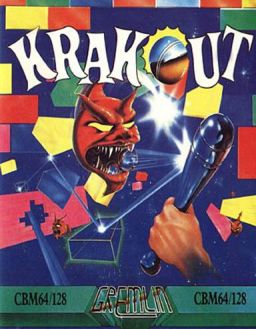
Krakout is a Breakout clone that was released for the ZX Spectrum, Amstrad CPC, BBC Micro, Commodore 64, Thomson computers and MSX platforms in 1987. One of the wave of enhanced Breakout variants to emerge in the wake of Arkanoid, its key distinctions are that gameplay is horizontal in layout, and that it allows the player to select the acceleration characteristics of the bat before playing. It was written by Andy Green and Rob Toone and published by Gremlin Graphics. The music was composed by Ben Daglish.

Apocalypse: The Game of Nuclear Devastation is a board game of nuclear war released by Games Workshop in 1980. It is based on The Warlord, a game designed and self-published by Mike Hayes in 1974.

The Lords of Midnight is an epic fantasy video game combining aspects of wargames and graphic adventures, written by Mike Singleton and originally released in 1984 for the ZX Spectrum. Very well received from the beginning, it was soon converted for the Amstrad CPC and Commodore 64. The game featured an innovative 3-D effect that Singleton called landscaping, which served to bring the player into the game much more than usual. The Lords of Midnight is often named with Elite as among the top role-playing games of the 1980s. The player must destroy Doomdark, the evil Witchking who has locked the Land of Midnight in perpetual winter. There are multiple ways in which this can be achieved. It was followed by Doomdark's Revenge also in 1984, and Lords of Midnight: The Citadel in 1995.
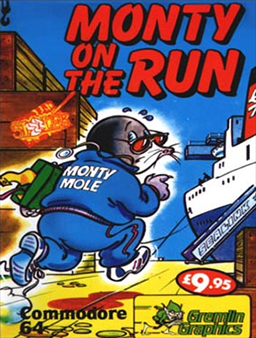
Monty on the Run is a computer game created by the software house Gremlin Graphics and released in 1985 for the Commodore 64, ZX Spectrum, Amstrad CPC and Commodore 16, written by Peter Harrap for the ZX Spectrum with the iconic in-game music on the Commodore 64 provided by Rob Hubbard. It is the third game in the Monty Mole series.

Eureka! is a video game for the Commodore 64 and ZX Spectrum computers, written by Ian Livingstone, developed by Novotrade for Andromeda Software and published by Domark in 1984.

Bug-Byte Software Ltd. was a video game company founded in 1980 in Liverpool, initially producing software for the Acorn Atom and ZX80. Bug-Byte's first hit was Don Priestley's Mazogs which was one of the most successful titles for the ZX81. In 1983, it published Manic Miner, considered to be one of the most influential platform games of all time. The company went into liquidation in 1985 but their name and logo were purchased by Argus Press PLC for use as a budget software label.

Match Day is a football computer game, published by Ocean Software in 1984 for the ZX Spectrum. It is the first game in the Match Day series, and was the creation of programmer Jon Ritman and Chris Clarke. Versions were later released for the Amstrad CPC and PCW, BBC Micro, Commodore 64 and MSX systems.
Quicksilva was a British games software publisher active during the early 1980s.
Crystal Computing, later renamed Design Design, was a British video game developer founded in 1982 by Chris Clarke and Ian Stamp while students at the University of Manchester. Graham Stafford, Neil Mottershead, Simon Brattel and Martin Horsley, joined the company as it expanded. The company's first software release was a compilation of games for the Sinclair ZX81, though it was with the ZX Spectrum that Crystal found its greatest success. A deal with the machine's manufacturer Sinclair to distribute Crystal's Zeus Assembler gave the company sufficient funds for a major marketing campaign for their next product, Halls of the Things, an arcade adventure game that became their most successful title.
Red Shift was a video game publisher active between 1983 and 1985. They were well known for their strategy games and had a close working relationship with Julian Gollop and Games Workshop.

Daley Thompson's Decathlon is an Olympic-themed sports video game developed and released by Ocean Software in 1984. It was released in the wake of Daley Thompson's popularity following his gold medals in the decathlon at the 1980 and 1984 Olympic Games. The game shares significant design similarities to Konami's 1983 arcade game Track & Field.
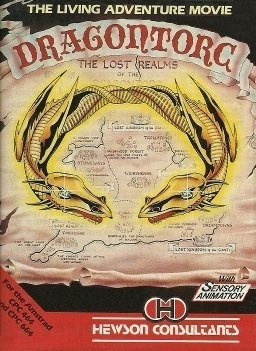
Dragontorc is an action-adventure game developed by Steve Turner's Graftgold and released for the Amstrad CPC and ZX Spectrum by Hewson Consultants in 1985. It is a sequel to 1984's Avalon The 3D Adventure Movie. The hero of Avalon, Maroc the Mage, returns to defeat an evil witch and save Britain. The game was well received by critics.
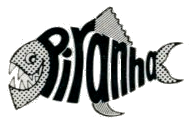
Piranha Software was a short-lived video game publishing label created by Macmillan Publishers in 1986 and closed eighteen months later. In that time it gained a reputation for its unusual output from well known developers such as Don Priestley, Design Design and Delta 4. The majority of their games featured licensed properties including the first video game based on the Discworld novels and two games based on the animated television series The Trap Door.

The Computer Edition of Scrabble, also known as Computer Scrabble is a computer version of the board game Scrabble, licensed from J. W. Spear & Sons and released by Little Genius for the Apple II in 1982. It was subsequently released for most home computers of the time.
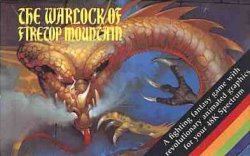
The Warlock of Firetop Mountain is an action game published by Crystal Computing in 1984 for the ZX Spectrum home computer. It is loosely based on the adventure gamebook of the same name written by Steve Jackson and Ian Livingstone, and published by Puffin Books in 1982.
The Warlord is a board game of nuclear conquest designed and self-published by Mike Hayes in 1974. Games Workshop published a simplified version titled Apocalypse in 1980.
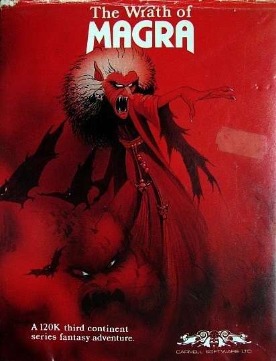
The Wrath of Magra is a role-playing video game published by Carnell Software for the ZX Spectrum in 1984. It is a sequel to 1983's Volcanic Dungeon.
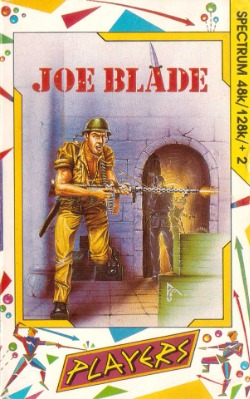
Joe Blade is a video game published by Interceptor Micros on their Players budget label for the ZX Spectrum, Commodore 64 and Amstrad CPC in 1987. It reached the top of the UK game charts, replacing Renegade. In Germany, the game peaked at number 7. It was ported to the Acorn Electron, BBC Micro, Atari 8-bit computers, MSX, Amiga, and Atari ST. A sequel, Joe Blade 2, was published in 1988. Another sequel, Joe Blade 3, was released in 1989.

















